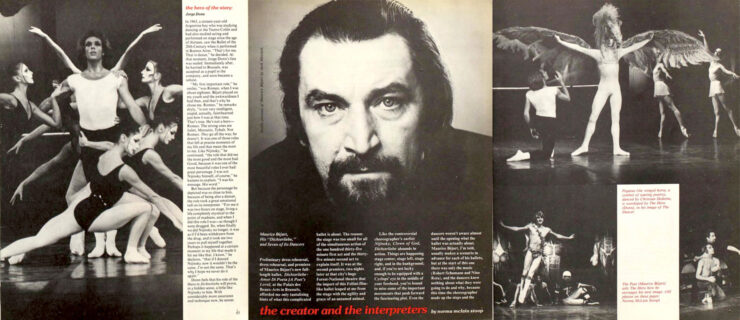How to Recognize—and Manage—Imposter Syndrome
It often starts as a little voice. “She looked better doing that combination than I did.” “I’m never going to get that role.” But over time, the whispers can turn to shouts. “I’m not as good as they think I am.” “I’m never going to make it as a professional dancer.” “I don’t belong in this program.”
These nagging negative thoughts are often the hallmark of what’s commonly referred to as “impostor syndrome,” a phenomenon where someone often doubts their talents and attributes any success to luck. “You’re always afraid that you’re going to be found out as a fraud,” says Brooke Ewert, a sports counselor at Rocky Mountain Sports Counseling Center in Colorado. Even dancers who’ve never battled impostor syndrome before might find it sneaking up on them as they enter a college dance program, where the pressure to go professional ramps up. But you don’t have to be a slave to these anxious thoughts.
Impostor to Invincible: Beating the Monster
Constantly questioning your competency can take a toll on your dancing and begin to seep into other aspects of your life, Ewert says. Facing this head-on can keep it from robbing you of the joy dance should bring.
1.
Find a nondance support system. Create a network of friends, family and peers outside of dance that you can turn to when you need a reality check and a moment away from the pressures of training. These people can provide a fresh, outsider’s perspective.
2. Remember that dance is subjective. In any art form, critique is often rooted in preference. Impress yourself first and others second. Remember that your dancing will never please everybody.
3. Write down your goals for the semester. Focus on personal growth rather than landing a specific role or getting cast by a guest choreographer.
4. Celebrate your accomplishments. When you check off a goal on your list, congratulate yourself! Take a moment to acknowledge and celebrate your growth. This will help you focus on your strengths, not just your weaknesses.
5. Practice gratitude. Instead of worrying about how you looked during your variation or whether or not an audition went well, relish the feeling of dancing. Be thankful for the opportunity to move your body, attend your university and hone your craft.
Know the Signs
Perfectionism. Dancers who grapple with impostor syndrome fear that any mistake could reveal that they’re a fraud, Ewert says.
Anxiety.
Impostor syndrome is not a disorder listed in the Diagnostic and Statistical Manual of Mental Disorders, but it is often accompanied by anxiety. If your dance training is becoming anxiety-inducing, Ewert suggests trying to drill down to the source of those feelings.
Excessive negative self-talk.
Pay attention to your thoughts in class or onstage. Are you constantly belittling, berating and talking down to yourself? Do you always deflect compliments?
All You Need Is One Yes

Lee Gumbs, Courtesy Williams
When Kristyn Williams started training in the commercial-dance program at Pace University, her impostor syndrome came to a head. “You have those moments where you’re really questioning yourself, your identity, your worth and if you want to make this a career,” she says. Her freshman and sophomore years were a roller coaster, she recalls. When her friends were cast in a role instead of her, she would celebrate with them but then harbor feelings of insecurity and doubt, wondering if she was good enough to make it in the dance world.
It wasn’t until she spent her junior year spring semester in Los Angeles with Pace that she began to change her mindset around rejection. “I started to understand that you’re not going to always have one straight shot forward,” she says. Williams noticed that in a sea of nos, all it took was one yes to change a dancer’s life.
Her Tricks for Managing Impostor Syndrome
1.
Meditating
2.
Journaling and goal setting
3.
Repeating the mantra “Nothing lasts forever”
4.
Investing in programs for self-growth, like mentorship, dance intensives and nondance, artistic workshops




